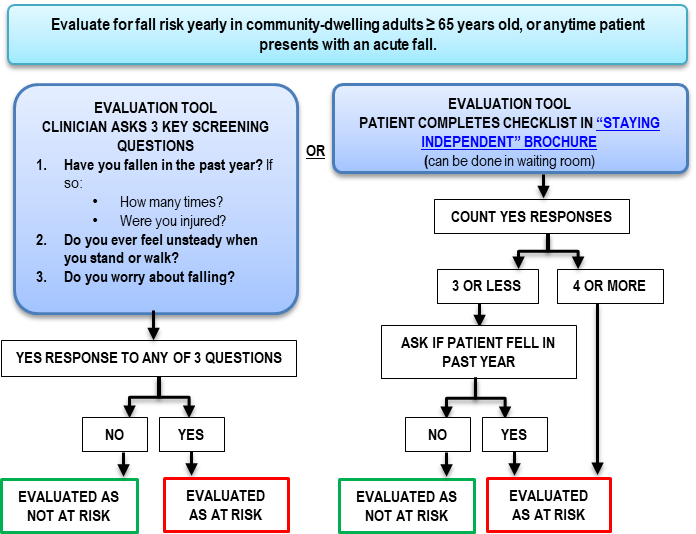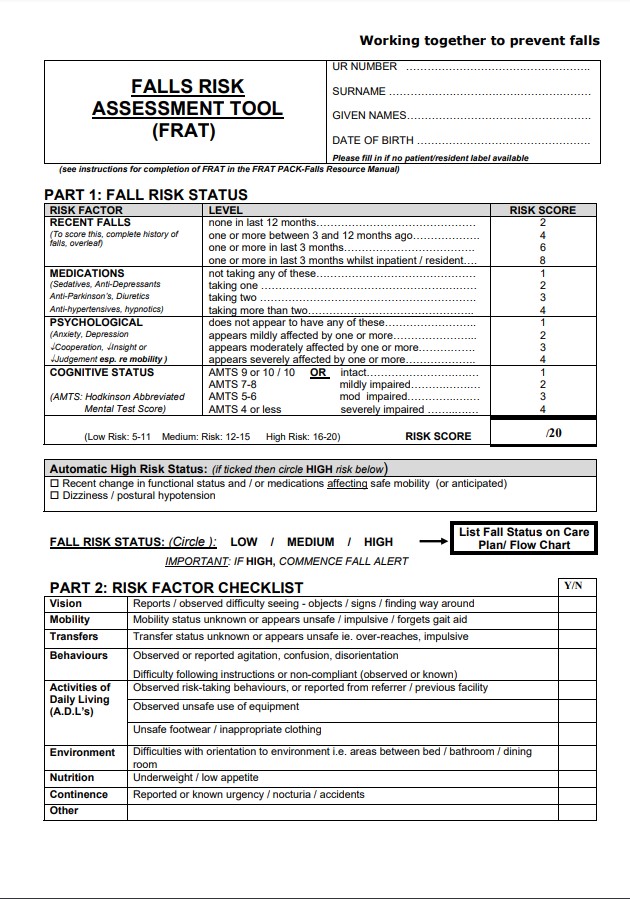Dementia Fall Risk Fundamentals Explained
Table of ContentsThe Ultimate Guide To Dementia Fall RiskThe 15-Second Trick For Dementia Fall RiskThe Single Strategy To Use For Dementia Fall RiskThe Single Strategy To Use For Dementia Fall Risk
A loss danger assessment checks to see exactly how likely it is that you will drop. It is mainly provided for older grownups. The evaluation generally consists of: This includes a series of concerns concerning your general wellness and if you have actually had previous falls or troubles with equilibrium, standing, and/or strolling. These devices evaluate your strength, equilibrium, and stride (the way you walk).Interventions are suggestions that may lower your risk of falling. STEADI includes 3 steps: you for your risk of dropping for your danger aspects that can be enhanced to attempt to protect against drops (for instance, balance problems, impaired vision) to decrease your threat of dropping by making use of efficient approaches (for example, supplying education and learning and resources), you may be asked several questions including: Have you fallen in the previous year? Are you worried about dropping?
After that you'll take a seat once more. Your provider will certainly examine exactly how lengthy it takes you to do this. If it takes you 12 seconds or more, it may suggest you are at greater threat for a loss. This examination checks strength and equilibrium. You'll being in a chair with your arms went across over your chest.
Move one foot halfway onward, so the instep is touching the large toe of your various other foot. Move one foot totally in front of the other, so the toes are touching the heel of your other foot.
See This Report about Dementia Fall Risk
Many falls take place as a result of multiple contributing elements; for that reason, managing the threat of dropping starts with determining the aspects that contribute to fall threat - Dementia Fall Risk. Several of one of the most pertinent threat aspects consist of: History of prior fallsChronic medical conditionsAcute illnessImpaired stride and balance, lower extremity weaknessCognitive impairmentChanges in visionCertain high-risk drugs and polypharmacyEnvironmental elements can also increase the risk for falls, consisting of: Inadequate lightingUneven or damaged flooringWet or unsafe floorsMissing or harmed handrails and grab barsDamaged or improperly fitted tools, such as beds, mobility devices, or walkersImproper use assistive devicesInadequate guidance of individuals living in the NF, consisting of those who display hostile behaviorsA effective fall risk management program needs a comprehensive medical assessment, with input from all participants of the interdisciplinary group

The treatment strategy should additionally include treatments that are system-based, such as those that advertise a risk-free atmosphere (suitable lights, handrails, get bars, and so on). The effectiveness of the treatments must be reviewed regularly, and the treatment strategy changed as required to mirror adjustments in the loss risk analysis. Carrying out a loss danger management system using evidence-based ideal technique can lower the occurrence of falls in the NF, while restricting the capacity for fall-related injuries.
The Buzz on Dementia Fall Risk
The AGS/BGS guideline suggests evaluating all adults aged 65 years and older for loss risk every year. This testing includes asking people whether they have fallen 2 or more times in the previous year or sought clinical interest for a loss, or, if they have not dropped, whether they really feel unstable when strolling.
Individuals that have actually dropped as soon as without injury must have their balance and gait reviewed; those with gait or balance problems ought to receive added assessment. A history of 1 autumn without injury and without gait or equilibrium problems does not call for further evaluation his explanation beyond continued annual loss threat screening. Dementia Fall Risk. An autumn threat evaluation is required as part of the Welcome to Medicare examination

What Does Dementia Fall Risk Do?
Documenting a drops background is among the quality indicators for loss avoidance and administration. An essential component of danger analysis is a medicine testimonial. Numerous classes of medications boost loss threat (Table 2). Psychoactive medications specifically are independent predictors of falls. These drugs have a tendency to be sedating, change the sensorium, and hinder equilibrium and gait.
Postural hypotension can frequently be eased by decreasing the dosage of blood pressurelowering medications and/or stopping medicines that have orthostatic hypotension as a negative effects. Use above-the-knee assistance tube and resting with the head of the bed raised might also reduce postural reductions in high blood pressure. The advisable aspects of a fall-focused checkup are revealed in Box 1.
-copy-5.jpg)
A pull time more than or equal to 12 seconds suggests high autumn danger. The 30-Second Chair Stand examination examines reduced extremity strength and balance. Being unable to stand up from a chair of check over here knee height without making use of one's arms indicates raised autumn danger. The 4-Stage Balance test examines fixed balance by having the patient stand in 4 positions, each considerably more challenging.